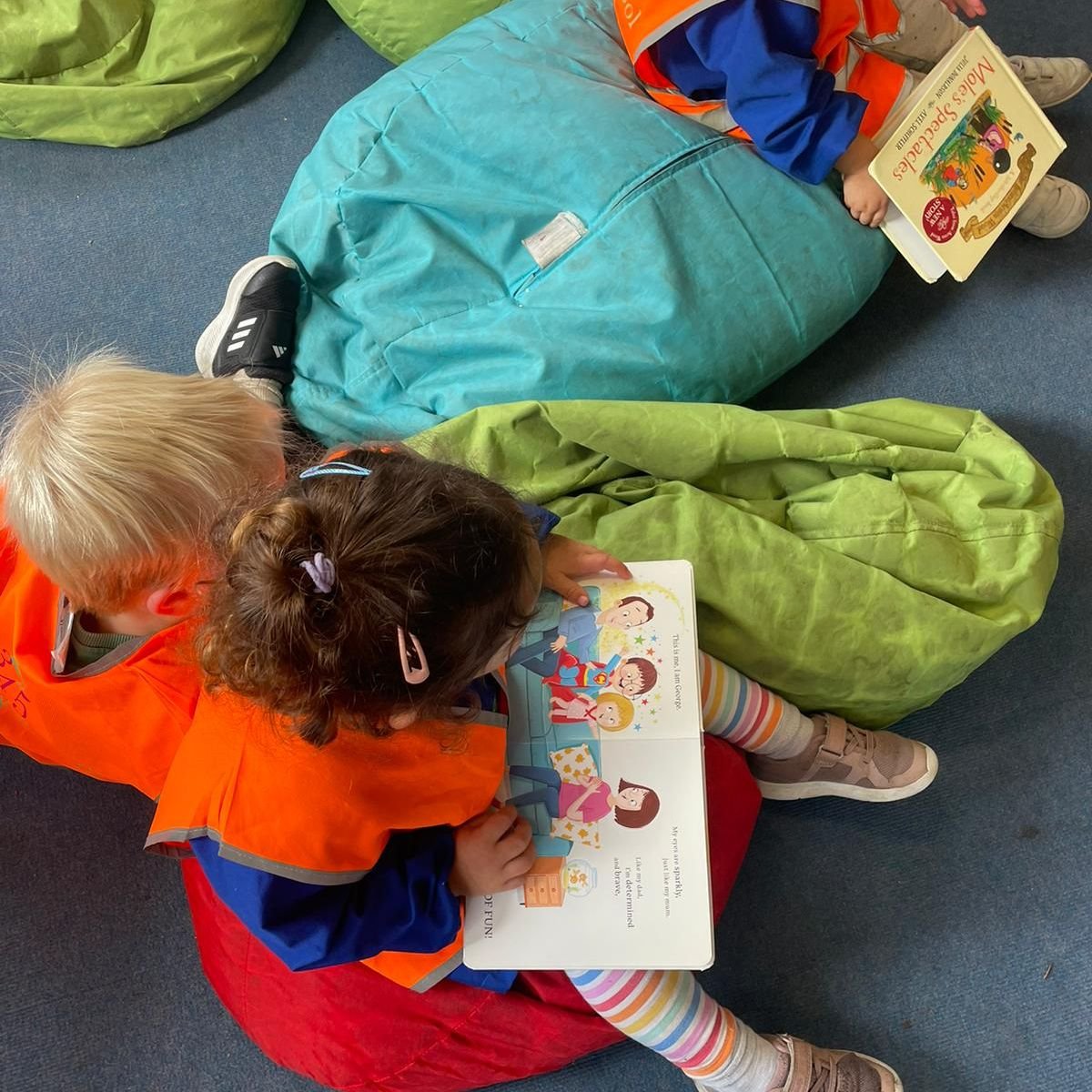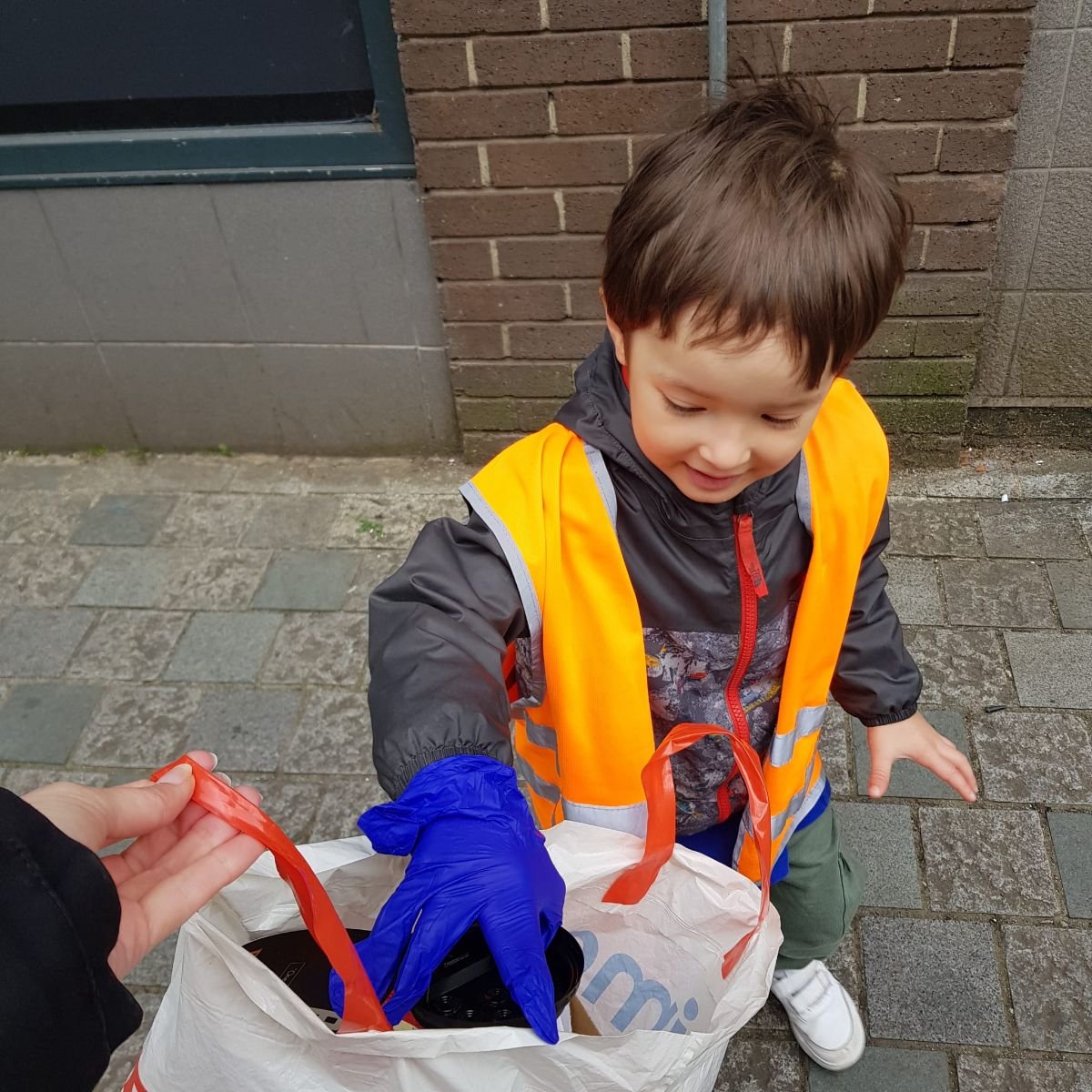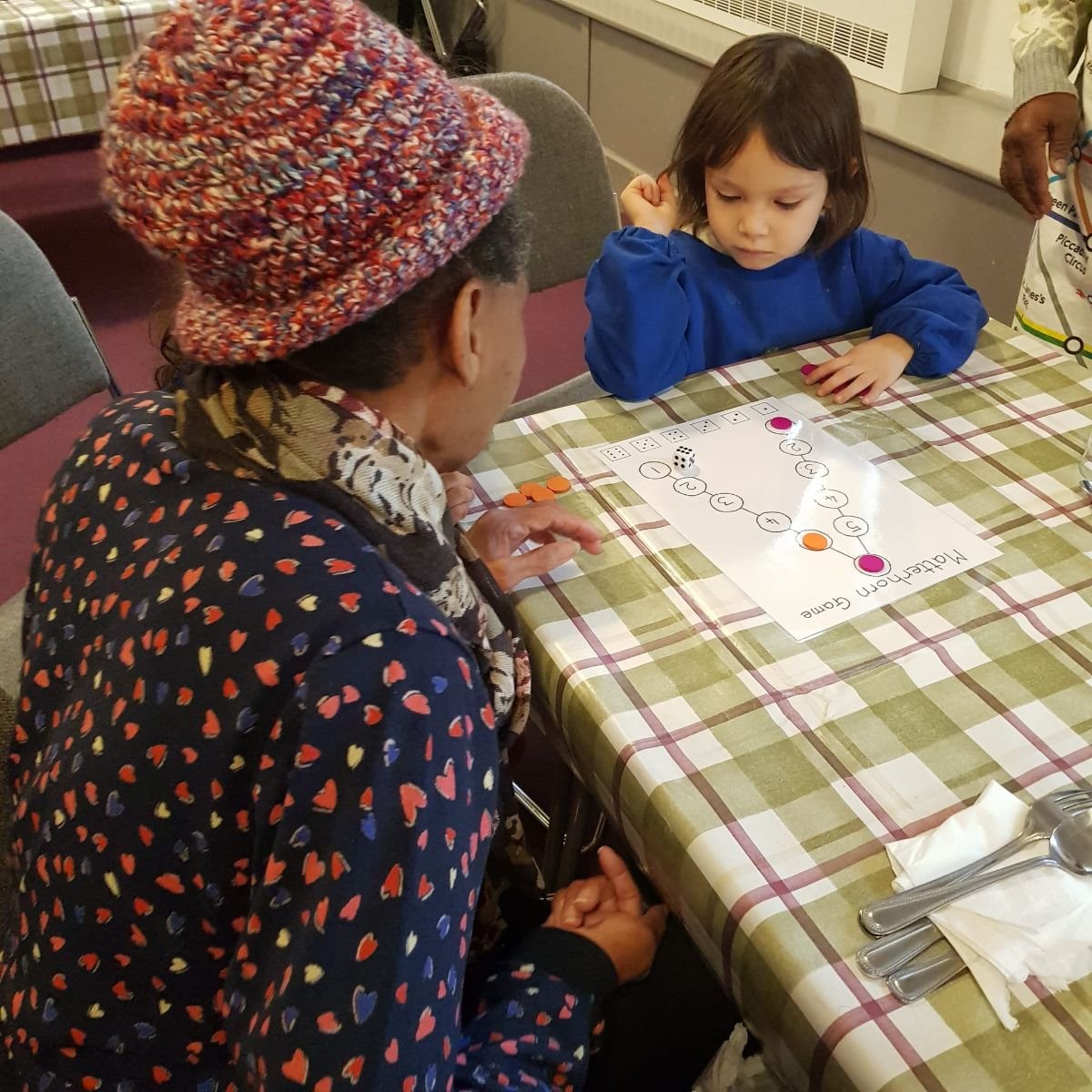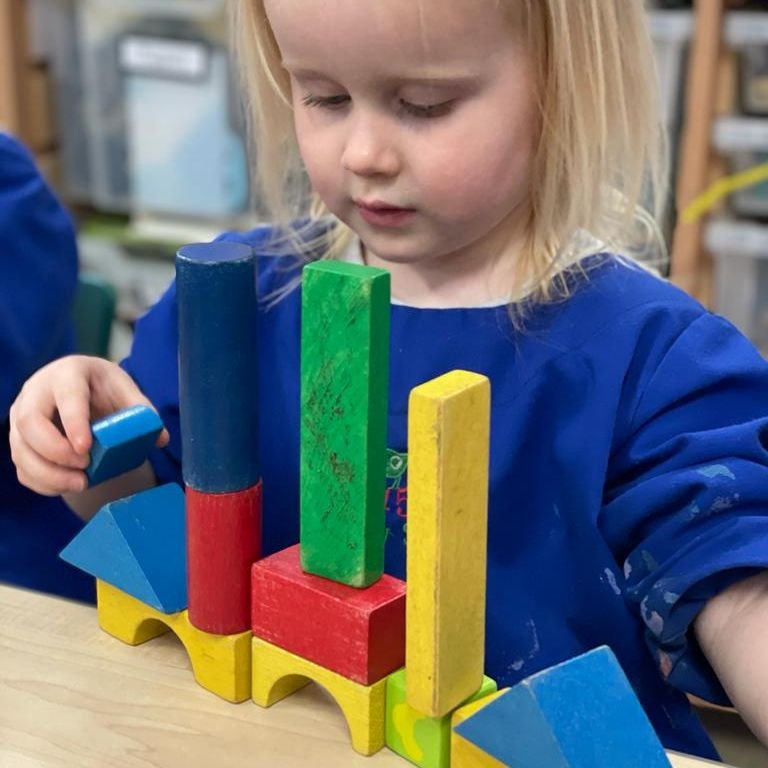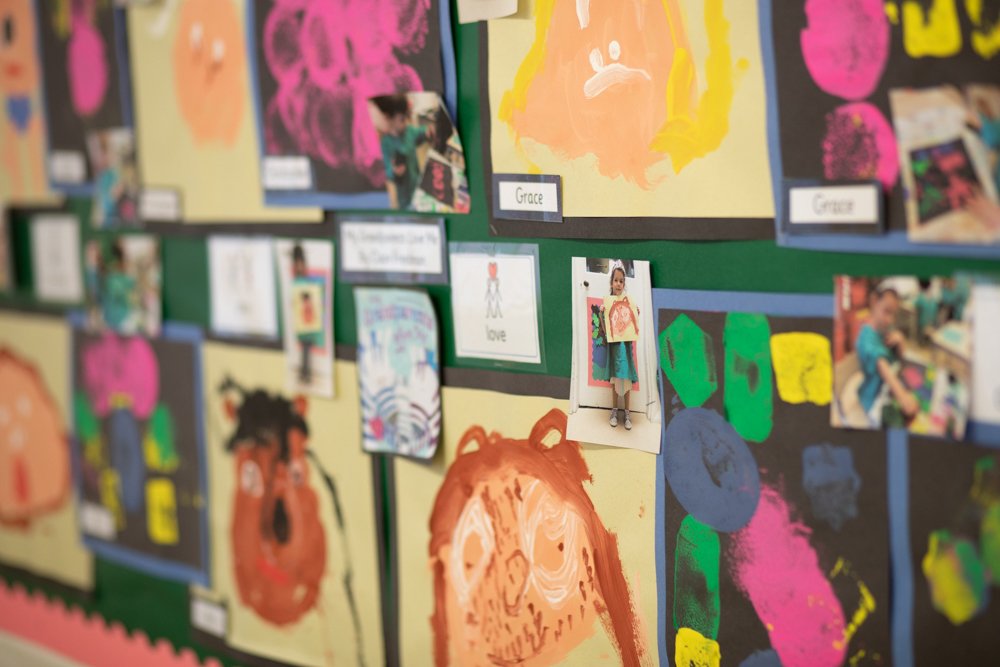
A spotlight on…
Resources and learning advice for parents
Below are a selection of resources and learning advice for parents. We aim to break down our curriculum and offer suggestions of how to extend your child’s learning at home.
Maths in the early years
Maths is all around us, and in the early years, children develop their mathematical understanding by making connections through play, daily routines, and real-life experiences.
At 345 Nursery, we embrace a hands-on, explorative approach to maths, helping children see numbers, patterns, and shapes in meaningful contexts. Young children learn best when they can see numbers in action — whether it’s counting how many steps they take, sharing out fruit at snack time, or spotting numbers on doors and buses. These natural interactions help them build a strong foundation for mathematical thinking in a way that feels engaging and relevant.
Rather than focusing on testing number knowledge with puzzles or tools like Numicon, we encourage teachable moments through child-led play. While structured resources can support learning, we often find that children memorise numbers and patterns when they use the same materials repeatedly.
However, when presented with numbers in a new context, their understanding may not yet be fully secure. This is why we expose children to a wide range of number and shape experiences, helping them make deeper connections and
truly grasp mathematical concepts.
Maths isn’t just about counting — it plays a role in how children understand time and routines. Following the daily schedule helps children recognise patterns in their day, develop a sense of time passing, and anticipate what comes next. Tools like sand timers help with turn-taking and sharing, showing children a visual representation of time while also developing patience and cooperation.
We also integrate maths into everyday activities, such as counting children at circle time, comparing different sizes in the sandpit, or discussing the shapes of objects during art/sensory activities and constructions. These experiences help children see maths as a natural and enjoyable part of their world.
It is important to recognise that children within the same group will be at different stages in their mathematical development. Some children may be working on number recognition or matching numerals to quantities, while others may already be adding and subtracting or even showing an awareness of larger numbers like hundreds and thousands.
In early years maths, as in all areas of learning, it is essential to differentiate activities appropriately—providing support or extension based on each child’s ability rather than setting them up to struggle. By meeting children at their individual levels, we nurture their confidence, curiosity, and enthusiasm for maths.
By nurturing curiosity and encouraging exploration, we help children develop confidence in their mathematical thinking, ensuring they build skills that will support them far beyond their early years.
Sharing stories together
At 345, we adore books and sharing stories with the children. We believe that nurturing a love for stories at a young age supports the children’s development and love of learning later in life as they embark on their school journey.
Most of our weekly topics are based on stories. Our teams get together to reflect on the children’s interests and their next steps in learning to inform the choices of these books whilst also considering how to broaden their awareness and understanding of the world around them.
Reading stories stimulates children's brains and helps them acquire important skills such as listening, expanding vocabulary, noticing details in illustrations or texts, and comprehension. These are crucial pre-reading skills that set children on a path to becoming successful and inquisitive readers and communicators.
Reflecting on stories by discussing events and characters develops children's communication and social skills. It also boosts their self-esteem, as they feel heard and valued when their ideas and opinions are acknowledged.
Books open doors to a limitless world of imagination. They encourage children to paint mental pictures, adding their own touches to the places, characters, and events they encounter. This nurtures their creativity and encourages them to express their ideas more freely with others.
Exploring imaginary worlds and characters' actions in stories creates a safe space for children to understand different emotions. For very young children, this often starts with picture books, where they spot visual clues like sad or smiley faces. Discussing why a character, such as Stick Man, might feel a certain way helps children develop an understanding of their own emotions, become more expressive about their feelings, and eventually become more empathetic towards others.
One of the most beautiful benefits of reading stories with young children is bonding. Snuggling together with a book gives children a sense of emotional closeness, which does wonders for their nervous system. They feel safe, loved, and calm, laying a solid foundation for their future mental well-being.
Reading stories together is a powerful tool for us, especially when settling children into the nursery setting. We regularly ask parents about the books their children love. Recently, during our ‘Bring Grandparents to Nursery’ morning, we observed many children and grandparents reading books together, which was wonderful to see.
In today’s fast-paced world, where we can watch cartoons and movies on the go, books help us slow down and transport us to beautiful imaginary worlds in a way that screens never can. The experience of reading together remains timeless and invaluable.
Our Person of Interest
As part of our curriculum we learn about a person of interest to the children which could be an artist, scientist, sports personality or musician. We developed this idea a couple of years ago after observing the children’s love of Superheroes and interest in out ‘People Who Help Us’ topic. We wanted to broaden their horizons and expand their understanding of who heroes are, teaching them instead that it is not just Spiderman and Firefighters who do remarkable things.
All big things start as small ideas and we want to ensure that the children understand that we are all good at different things, and all talents should be celebrated and valued. Every term we learn about a different Person of Interest, focusing not just about what they have achieved but also their journey, childhood and sometimes the challenges they had to overcome.
We choose the Person of Interest based on the children’s interests and select a relevant topic accordingly and sometimes we let the children vote for the Person of Interest they would like to learn about.
We use books and other media such as videos, magazines, posters and photographs about the person to allow the children to learn as much as possible. We love observing how the learning process evolves and takes us in a range of directions. For example when the children were learning about Frida Kahlo they were fascinated by her and her story. Despite being very unwell, she continued to paint in her bed which made her feel better. It was a great example of being resilient and dealing with adverse situations.
We have also invited parents, extended family members and friends to come and talk to us about their, jobs, skills and hobbies. In the past, we have had grown ups talk to us about fishing, sewing clothes and playing the saxophone. The children love listening to the life stories of others and we are very thankful to you for being willing to share your skills with us.
One example has been David Attenborough. The children loved finding out out more about the different habitats and climates he has been explored. We watched some of Planet Earth III and discussed why conservation is so important. We also read the 'Little People Big Dreams' series all about David Attenborough and the children were captivated by his dedication to help save the animals, vegetation and all aspects of our natural world.
We also watched a section of Planet Earth III Narrated by Kids and as the trailer says "you don't have to be David Attenborough to be a voice for nature." The children were keen to help such a good cause and created clay turtles and fish which they covered in plastic to highlight the problem faced by the inhabitants of our oceans when we do not dispose of rubbish properly. We went out litter picking and the children have spoken to their parents about litter and David Attenborough.
If we are ever out and about and see rubbish we try to safely relocate it and the children are more than disappointed to see that people are not protecting our wildlife properly. They are quickly becoming the next generation of 'Attenboroughs'!
Art in the early years
Expressive Art and Design is one of the areas of the Early Years Foundation Stage and it covers a range of skills the children should be able to master by the end of their reception year.
It includes developing techniques when using colour, patterns, textures, shapes and lines. However, it also includes other creative skills such as performing songs, being able to move in time with music as well as being imaginative and expressive. Today we will focus on painting, sculpture and working with other media such as textile or natural materials.
At 345 the children start exploring Art on their first day at nursery. I am sure many of you have wondered about a few vertical lines of the same colour drawn or the small piece of bubble wrap glued to the centre of the paper with lots of shiny splodges around it, resembling the snail’s trail. These initial art pieces are the building blocks in your child’s artistic journey, where they learn to hold a brush, spread glue, mix colours and identify different textures.
In the early stages our focus is on the process itself and it is often interweaved into a range of activities on offer, not just at the art table. The children can freely create at the DT station, explore textures inside the sensory or messy trays and explore shapes, colours and space when creating with the loose parts play.
During these early stages there is often an adult present who will create alongside the children. Their role is to model the process and expand the children’s communication and language abilities by commenting on the work.
As the children’s imagination, language skills and confidence in using the range of tools and media develop the focus on process starts shifting. They start creating with intention and purpose in mind and often become passionate about their work, excited to describe the process and the small details in their paintings and drawings.
Showing an interest in a child’s art work by listening to their ideas, making positive comments or asking questions will make them feel valued and more likely to feel comfortable and confident when embarking on their next artistic project.
The different Art activities develop the children’s imagination as well as encourage self-expression. We encourage the children to make their own choices and decisions.
This may be daunting for some children and support to develop these skills within a safe and supportive environment is needed. This is one of the reasons we don’t ‘correct’ Art. You won’t find a display board depicting ten elephants with perfectly placed ears, trunks and a pair of eyes, all facing the same direction at 345.
We love observing the artistic journeys of all the children in our nurseries; from the very little ones who repeatedly dip their hands in paint just so they can wash them repeatedly, to those who proudly ask the teachers to display their art on the Art Gallery display board or send it to Mummy via Tapestry.
Painting, drawing or sculpture are not the only ways for children to express their creativity, but we love encouraging them to participate in all these activities to continue to develop their curiosity and inquisitiveness.
Learning in the community
A community is a social unit or a group of people with a shared socially significant characteristic, which may include the place they live, values, traditions, or culture. In this newsletter, we will focus on the place we live in, sharing the geographical area of South London, Balham, and the 345 Nursery surroundings.
As a nursery setting situated in the heart of a buzzy neighbourhood in Balham, we try to make the most of the learning opportunities this provides to us. The children start to explore the surroundings as soon as they join the Kits’ classroom at the age of two. They venture out on community walks to observe the sounds, colours, and shapes before visiting the shops and markets. We endeavour to incorporate community learning into our topics to provide new learning opportunities and last year, during our Artists topic, the Squirrels went on an Art hunt, spotting different artworks around Balham, including murals, sculptures, and mosaics.
The children regularly visit the vegetable stall in the market or supermarket to help look for cooking ingredients for our Cookery sessions. In the past, they have bought plants for our Outdoor Learning Area from the flower stall and have visited the Post Office when posting letters to grandparents. The weekly visits to Balham Library allow the children to explore a wide range of books and nurtures their love for stories.
Alongside learning about the different local services and people who provide them in our Focus Time lessons, our activities in the community provides the children with opportunities to learn about building relationships and how to treat others with respect.
The Squirrels’ regular interaction with the Dew Drop Inn is a huge success, and the children look forward to seeing the ‘big kids’ as the pensioners like to call themselves. The sessions have included singing together, making crafts, playing playdough, and games. We particularly loved the session where the children and pensioners brought pictures of their family members, and we learned about each other’s lives. These visits bring so much joy and an opportunity for the two generations to learn from each other and gain new skills.
We have observed the children gaining confidence when interacting with adults not familiar to them, learning to listen and be patient as the ‘big kids’ may not be as quick in their responses or able to hear when we speak too quietly. I’ll never forget the moment when one of our pupils encouraged one of the pensioners to ‘squeeze the playdough properly.’ And after the discovery that some of the old fingers may not be as dexterous, a plan was devised: the children would squeeze the dough, and the pensioners would roll it out or pat it down.
The Squirrels’ weekly Outdoor Learning Days are another opportunity for the children to notice changes in their immediate environment. Most recently, the appearance of Halloween, Diwali, and Christmas decorations in the shop windows have sparked lots of conversations about traditions and celebrations. Once the children reach their destination on the common, they learn more about nature, the changing seasons and the weather. We learn about the impact this has on the natural world, including animals and us humans too.
Our close relationship with Balham Baptist Church and the ability to use their facilities also enriches the children’s experiences and has helped to build their confidence to perform on the stage within a larger and less familiar space and to participate in events such as Harvest Festival, concerts, or workshops.
Our communities help us make sense of who we are. At 345 Nursery, we recognise the countless teaching opportunities community learning provides for the children. This may include building relationships to support personal, social, and emotional development or learning new vocabulary and the art of communication with others. It is through the child’s immediate and wider community that they start learning about the world around them, enabling the children to become independent and confident human beings ready for life in modern-day Britain.
Transitions
Transitions occur throughout every stage of life. Children move from home to Early Years settings, then to primary school, changing classes every year before going onto secondary, further and higher education. It is often the first experiences of transition that influences one's outlook and coping strategies during changes as they grow.
Starting Nursery is for many families an enormous step and the children’s and parental responses vary tremendously. At 345 Nursery School, we recognise how important it is for both children and families to have a seamless transition from home to nursery. It is on this strong foundation that trust is built between parents, children and the teaching team.
Our settling-in policy includes ‘Stay and Play’ in the Summer Term, ‘Home Visits’ prior to the first day and short settling-in sessions. We work individually with each family to tailor a settling-in programme specifically to their needs. Some people ask why we do the ‘Stay and Play’ at the beginning of the Summer when September seems so far away. Well, starting nursery is often the most significant event the children have had in their life to date and just like adults it is good to gain an insight of what to expect. ‘Stay and Play’ sessions provide a starting point for parents to discuss nursery life, helping the children understand what to expect
Meeting the children in their emotionally safe environment during ‘Home Visits’ enables the children and teachers to start to form a bond. During the ‘Home Visits’ the teachers interact with the children and discuss their needs, likes and dislikes with parents. ‘Home Visits’ also allows parental expectations to be discussed and concerns and questions to be answered, helping to pave the way for a smooth transition. During the initial settling-in days the teachers prioritise forming a relationship with the children in a safe and welcoming emotional environment, drawing on all the information gathered from previous meetings and questionnaires.
Settling-in to nursery should not be viewed as a single event, but a process. While some children are happy to simply say goodbye on day one, others may find it overwhelming. Having honest and open ongoing conversations with parents is key to a successful settling-in programme.
The farewell routine you establish with your child is also incredibly important. It should be short yet affectionate, reassuring the children that you will return. Keeping the message clear and easy to understand will prevent causing distress during the separation.
We recognise however that parting for the first time can still be emotional for Parents. If possible please try to avoid crying in front of the children as this may heighten their anxiety. The initial tears are often short lived but please rest assured our team will do their best for your child to feel safe and happy at 345 and we will of course keep you updated throughout the morning.
Starting nursery or moving to a new class can also negatively impact the children’s behaviour at home. Imagine starting a new job. There is so much to learn. Everything is new including basic things: understanding where belongings are kept, accessing the loos, washing hands or knowing who to turn to for comfort and help. For a young child this takes lots of energy and effort which may leave you with very tired and emotional little ones in the afternoons. It may take a few weeks to adjust therefore we suggest parents allowing the children time to rest, nap and simply just be. It is also beneficial to look at your child’s tapestry profile with them, enabling them to reflect positively on their day and remembering all the fun things they have done and are experiencing.
At 345 Nursery, we never underestimate the transition and the time it may take for a child to settle in, however we know that all children can have a positive start. Greeting the children’s smiling faces every morning highlights the success of our bespoke settling-in policy – it is the first step to a happy school life.
Schemas
Schemas are patterns of repetitive behaviour which are often noticed in young children’s play.
Do you remember the time your children endlessly dropped objects from their highchair or pushchair only to drop them again the moment you picked them up? Or, do you notice them focusing intently when lining up cars, blocks or collecting objects and putting them inside bags? Another type of schema we often notice is creating a beautiful picture before completely scribbling or painting over it.
At a first glance these repetitive behaviours may seem boring and almost pointless. However, to a child schematic play offers a window into a world of discovery of the world around them and how things work.
There are nine most common types of play schemas; connecting, enclosing, enveloping, orientating, positioning, rotating, trajectory, transforming and transporting and children can be engaged in one or more simultaneously. Schemas can interconnect, overlap and develop as the children progress in their learning and for some children the schemas will be dominant in their play whilst for others it may be more subtle.
As early educators and parents an understanding of schemas provides a wonderful tool to facilitate and extend a child’s development. Recognising schemas and understanding them helps the planning of daily activities for children and informs our curriculum. For example, a child who engages in an enveloping schema will benefit from being introduced to different types of bags as this will provide an opportunity to discuss size, volume and what the different bags may be used for e.g. backpacks for school, big bags for shopping. In contrast, the lining up or stacking of objects (positioning schema) helps develop an understanding of pattern, balance, categorising and hand-eye coordination.
There are as many examples of schemas as there are children and we could write pages and pages about all the exciting examples we notice during play at 345. Please do come and chat to us if you would like suggestions on how to extend and develop your child’s schematic play at home. It will be surprisingly easy as schematic play regularly involves objects that are readily available at home such as boxes, tubes and jugs.
Tips for developing your child's hand strength and co-ordination
Please be reassured that every child develops at different rates and if they are currently not interested in pre-writing activities, please do not force them to do so at home.
There are however lots of fun activities you can facilitate to help strengthen your child's overall hand strength and co-ordination to help prepare them in their handwriting skills.
The hand consists of many small muscles which flex between the joints that are responsible for our ability to move a pen effectively when writing, including making lines and loops. A child initially develops strength in their core muscles which then cascades throughout the rest of the body.
It is therefore paramount that children develop their gross motor skills before refining smaller motor movements needed for handwriting. Some examples include skills in sitting upright, walking and using their arms and legs to pass objects. The development of fine motor skills will naturally follow and will develop at different rates. Please try not to compare your children to others!
It is important that children are involved in ‘heavy work’ including pulling, pushing, lifting, and carrying. You will often see on Tapestry photos of the children pulling and pushing a loaded trolley with their peers, climbing, pulling themselves up a rope or carrying and reorganising the wooden log seats and planks. All these activities are hugely beneficial for strengthening their muscles and increasing muscle growth. It also helps the children become attuned to their body and understand how different body parts work in unison.
When playing on the floor with your children try to encourage them to sit upright with their legs crossed for a short period of time every day. This has a similar effect to performing a “plank pose” which engages the core muscles to hold oneself in position. Some children find this harder than others. We suggest modelling sitting cross-legged and sitting in this position for a story or two.
We encourage children to participate in mark-making activities that involve large arm movements. For example, using large brushes and rollers dipped in water to make marks on blackboards and windows. We also encourage them to squeeze triggers on spray bottles to aim and hit targets. This is another great workout for the lumbrical muscles in the hands. Waving scarves, ribbons or bubble wands when running or dancing will have the same effect. It also brings lots of joy, movement, and excitement to any outing in the park or when playing outside. Physical activities and “heavy work” in general will not only develop a child’s strength but will have a wonderful calming effect too.
Once the arms are stronger and a child’s posture develops, they will naturally gravitate to activities requiring more control and use of their fine motor skills. We are huge fans of the Montessori Practical Life and Finger Gym activities at 345. You will have read plenty of observations about these on your child’s Tapestry profile. These include pouring, spooning, transferring, pinching pegs, cutting, and fastening zips, Velcro and buttons.
The great thing about our suggested activities is that you can use objects you have at home – cutlery, jugs, turkey basters and pegs. During visits to the playground or park encourage the children to take risks when climbing on the apparatus and trees. This will also help develop their hand strength. If they want to carry sticks or small logs home think of the muscle growth rather than the collection of debris on your doorstep! Walking, cycling and scooting at any opportunity is great for overall co-ordination and wellbeing for both body and mind.


